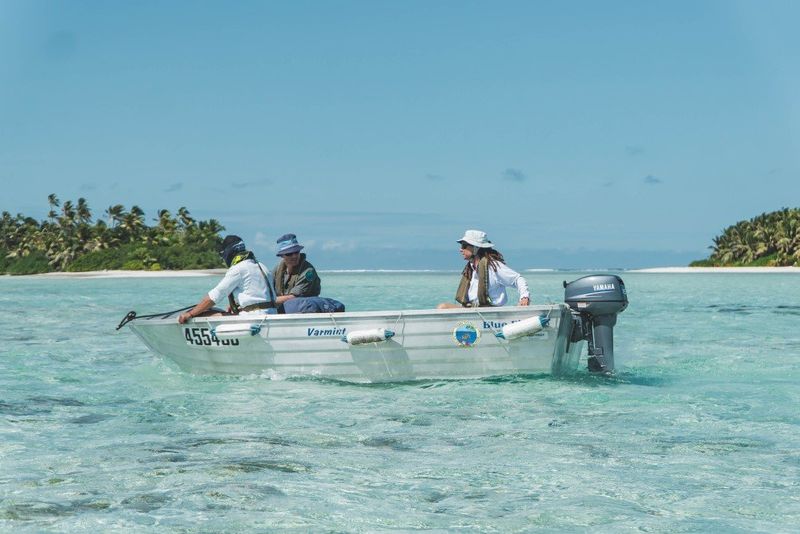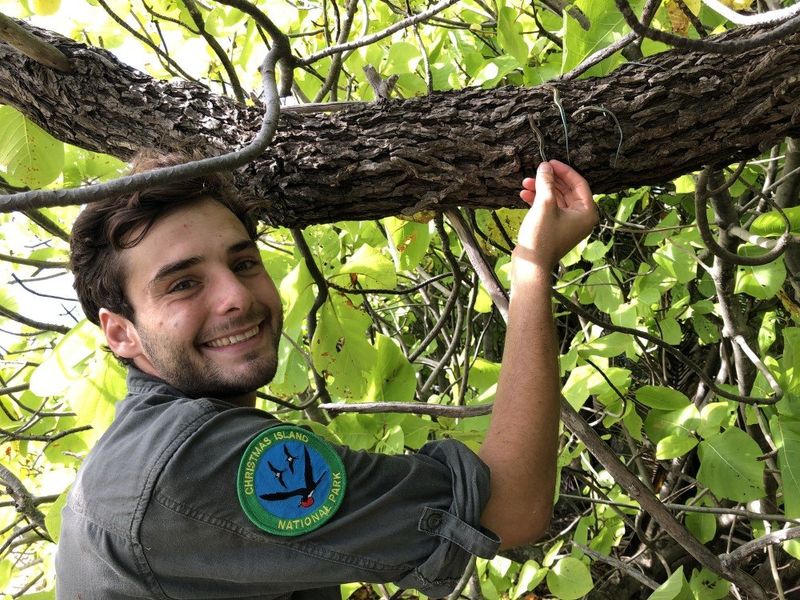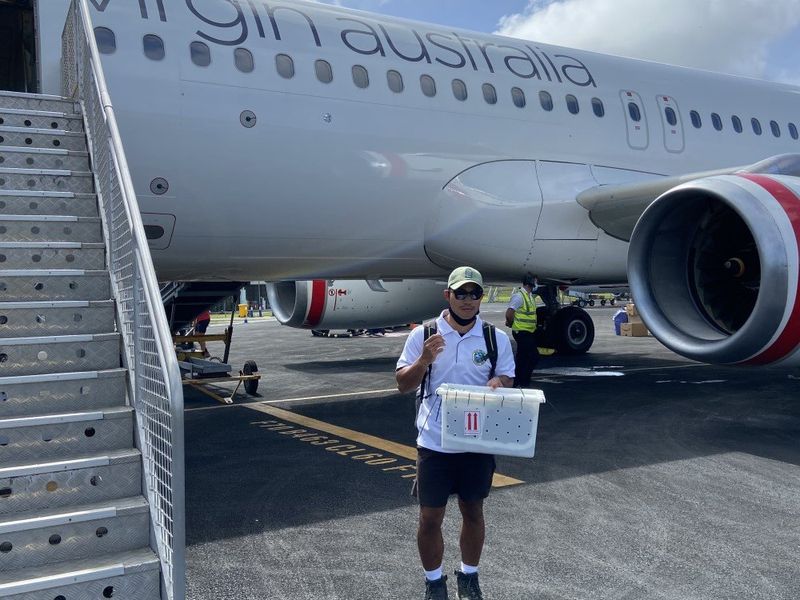Basking on tropical oasis after decade in captivity
Despite torrential rain turning the Cocos runway into a water-logged skillet and the imminent threat of the Indian Ocean Territories closing its borders due to a COVID-19 threat, 165 of the world’s rarest reptiles have landed safely after a 6,000 km flight.
Brendan Tiernan, Parks Australia threatened species manager for Christmas Island National Park, said 125 blue-tailed skinks that travelled from Taronga Zoo, Sydney, were now roaming free and basking in the tropical sun of Pulu Blan Madar, a tiny tropical island oasis in the Cocos (Keeling) archipelago.

“It’s a tough trip for them. But the destination is worth it. We’re rewilding these skinks to extinction-proof them for the future,” Brendan said.
“The blue-tailed skinks have already secured a foothold on two Cocos islands – Pulu Blan Madar and Pulu Blan. This latest reintroduction, which also includes 125 blue-tailed skinks from our Christmas Island captive bred population, will boost numbers on Madar.

“Many of the skinks we released last month had never seen sunlight. They got here safe and sound and they’re now doing great. From here we’ll keep an eye on the population as it grows.”
Meanwhile, his Parks Australia colleague Siddiq Juljali, a ranger at Pulu Keeling National Park, boarded the Virgin Australia flight shortly after touch down on Cocos to escort the 40 Lister’s geckos to their ancestral home of Christmas Island.

Siddiq said the geckos from Taronga’s captive breeding program had a bit further to travel than the skinks.
“Our Taronga Zoo Conservation Society friends chaperoned both reptile species on the big trip from Sydney to Cocos,” Siddiq said. “The blue-tailed skinks disembarked at Cocos but I took the geckos for the final 1,000-kilometre hop to Christmas.
“The Taronga geckos will bolster the genetic diversity of the captive-bred Christmas Island National Park population.”
Both critically endangered reptiles were saved from certain extinction after being rescued from a remote region of Christmas Island in 2009 and 2010.
Brendan spear-headed the mission to rescue the reptiles before they got mown down by introduced predators such as Asian wolf snakes that were sweeping across the island at the time.
Just months before both species disappeared from the wild on Christmas Island, the Parks Australia-led team, through Christmas Island National Park, captured 66 blue-tailed skink and 43 Lister’s geckos.
Over the past decade, two successful captive-bred populations were created at the Christmas Island National Park research facility and at Taronga Zoo.
On September 7, 2019 – Threatened Species Day – 150 blue-tailed skinks were reintroduced to the wild on the predator-free island of Pulu Blan after the population had spent a decade in captivity.
“The scientific journey to rewilding a species doesn’t fit neatly into the daily news cycle,” Brendan said. “It’s about 10 years of discovering how to do stuff never done before, dealing with gut-wrenching set-backs and then, if you’re lucky, white-knuckling your way to success.”
Parks Australia leads several rewilding programs across its spectacular national parks where protecting biodiversity is an ongoing priority.

